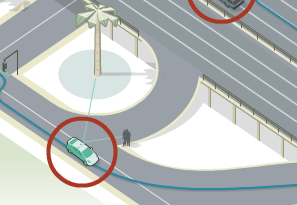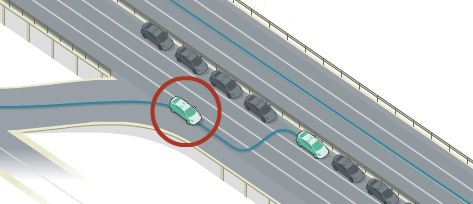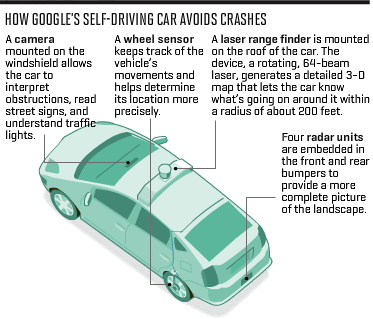Preventing accidents in Google’s autonomous cars
Google unmanned cars should drastically reduce the number of accidents on the roads. The automatic control system detects traffic lights, reacts faster to sudden obstacles and pedestrians, moves strictly along the route from the navigation system and constantly communicates with the Internet. If necessary, the system can plan the detour scheme itself by downloading the necessary maps from Google servers, and having received in advance information about the traffic jam or traffic jam ahead of the route.
The CNN website has published an interactive diagram of how a Google car responds to different situations.
If the car goes along a previously known route, it will better recognize the surrounding objects. For example, a car knows where a tree is located and will not confuse it with a pedestrian.

')
Theoretically, “smart” cars can move at a smaller distance from each other - in dense columns - using the road space more economically.

At this point, Google’s computer-based vehicle management system receives information from several elements :

The CNN website has published an interactive diagram of how a Google car responds to different situations.
If the car goes along a previously known route, it will better recognize the surrounding objects. For example, a car knows where a tree is located and will not confuse it with a pedestrian.

')
Theoretically, “smart” cars can move at a smaller distance from each other - in dense columns - using the road space more economically.

At this point, Google’s computer-based vehicle management system receives information from several elements :
- video camera under the windshield detects obstacles on the road, reads road signs and traffic lights;
- the sensor on the wheel allows you to more accurately determine the distance and location of the vehicle;
- the laser range finder on the roof rotates and scans the area with the help of 64 lasers, making up a detailed 3D model of the surrounding space within a radius of 60 meters;
- Four additional radars in the front and rear bumpers complement the 3D model.

Source: https://habr.com/ru/post/141685/
All Articles